Long-time landcarer reflects on changing Kojonup environment
Kath Mathwin has lived amongst Kojonup’s environment for over 80 years. As a landcarer and farmer she delivers a poignant account of change and loss over that time. Gondwana Link invites reflection on her story of bush delights and the decline of natural beauty and diversity in farming landscapes. But there’s cause for hope – communities can restore some of this richness if they give nature a chance and put a greater effort into this vital task.
Here is Kath’s moving appeal for a stronger landcare ethic in the Kojonup district and beyond.
By Kath Mathwin
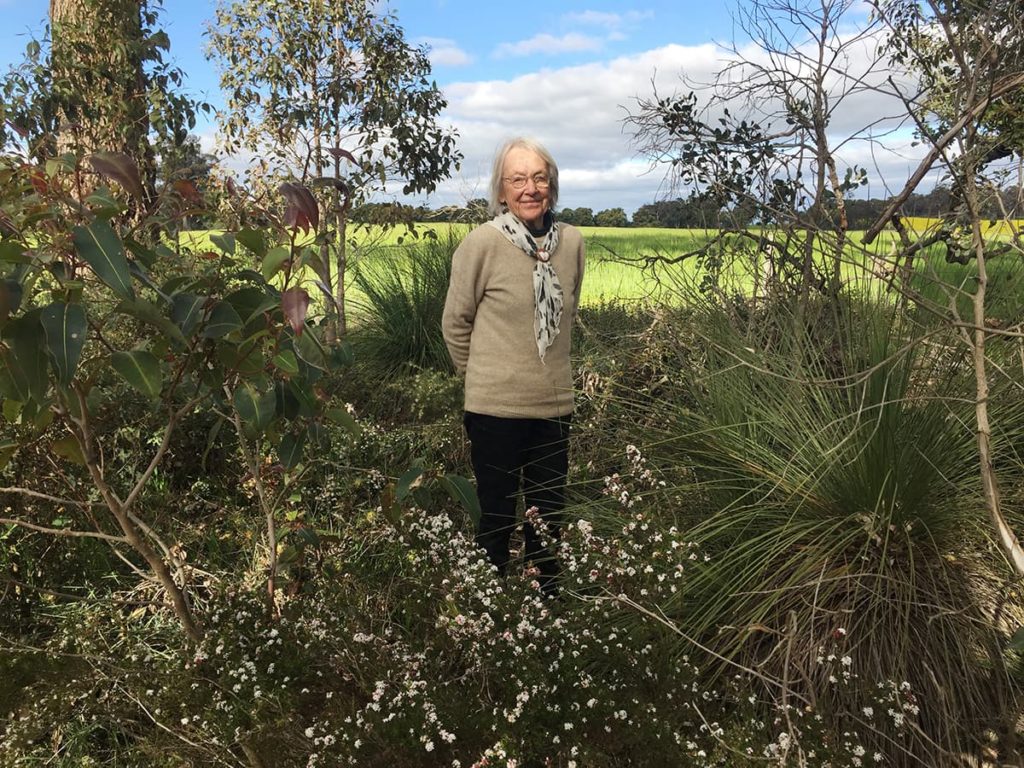
Not many of us can remember the Kojonup landscapes and the roadsides of nearly 80 years ago. So not many of us realise how much has changed over that time – and how much we are missing.
Then, the cleared paddocks were mostly lightly stocked with merinos, many had desolate, ringbarked, dead trees standing in them, and there was still a lot of natural bush.
Gradually most of this bush has been cleared, except the trees selected for shade, shelter or just being special, or because they were too big for the bulldozers!
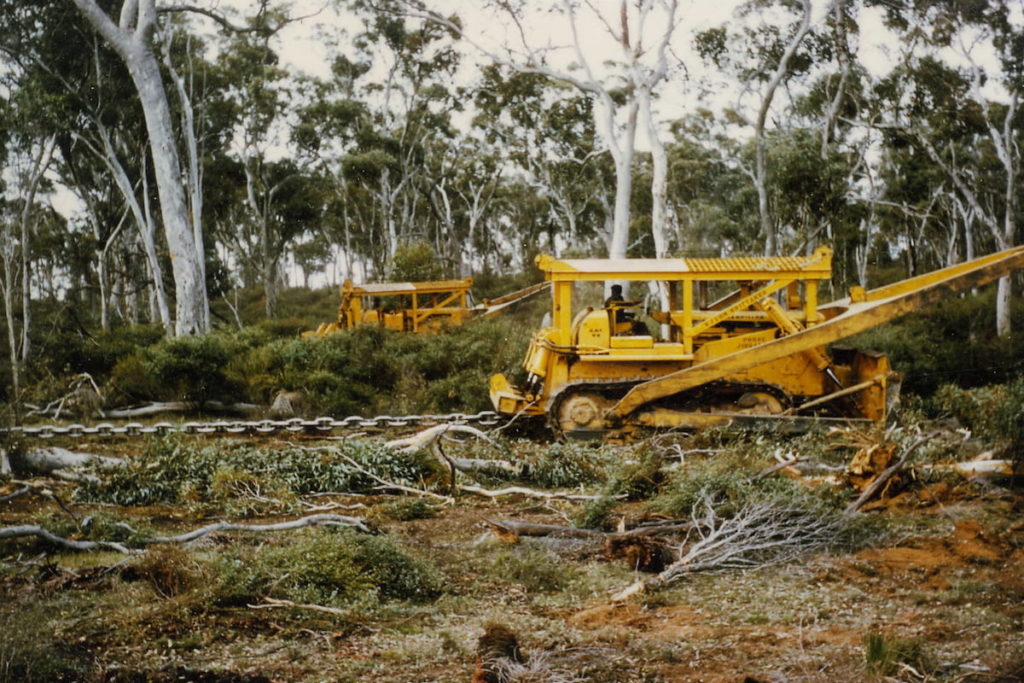
Every year the four seasons (or six in Noongar understanding) came and went. Every year each season was different – the people, the flora and the fauna had to be able to adapt. Sometimes there was a summer downpour; sometimes winter rains came early, sometimes late; there were droughts and floods, frosts and heat waves, even rare snow falls. Nature can adapt to seasonal conditions but is struggling to cope with ‘progress’!
Back then there was always something flowering in the bush, but it was in the springtime that our road verges and bush turned into floral wonderlands, with gardens of nature on both sides of the roads.

Small bunches of flowers could be picked, enjoyed in a vase on the mantlepiece until they withered, or looked up in the wildflower book, pressed between sheets of newspaper, or coloured pencils brought out to try and draw them. Common names of the flowers were familiar to many children and their parents,
Spring wildflowers remembered from our roadsides are:
- pink fairy orchids, glossy pink enamel orchids, rose-tipped mulla mulla, black-eyed Susan, pink boronia, snake bush, pimelea, pink everlastings and trigger plants with their amazing pollination mechanisms which were such fun to activate;
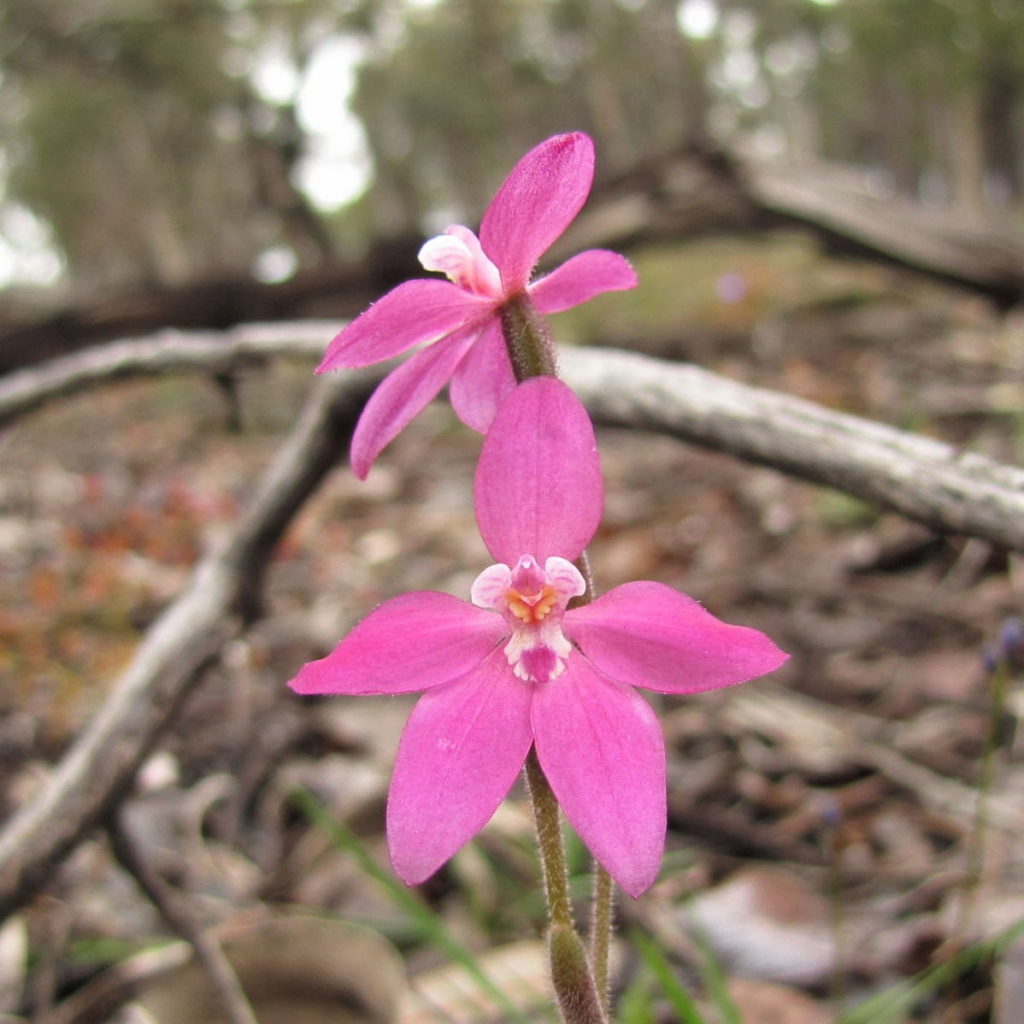

- yellow wattles in many shades of gold, donkey orchids, vanilla orchids, banjines, buttercups, banksia, stinkwood, common pop flowers and bachelors’ buttons;

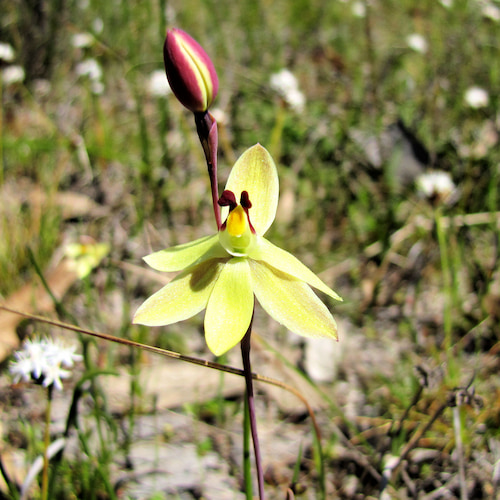
- white pincushions, graceful white spider orchids, milkmaids, smokebush, myrtles, sundews and grevilleas;

- blue squills, leschenaultia in every hue of sky blue, china orchids, bluebells and blind grass, which was reputed to make horses go blind if they ate it;
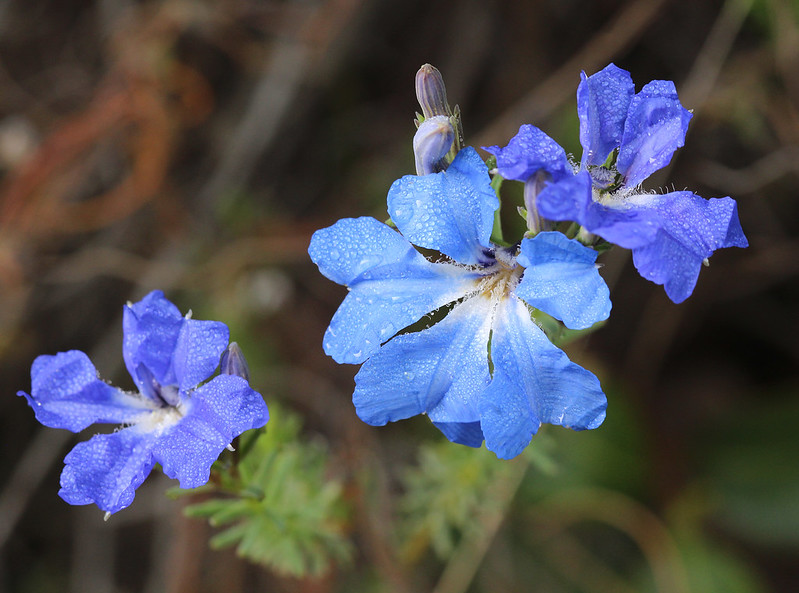
- purple fans, royal robe, dampiera, fringed lily, purple tassels (or pixie mops), purple enamel orchids and hovea;
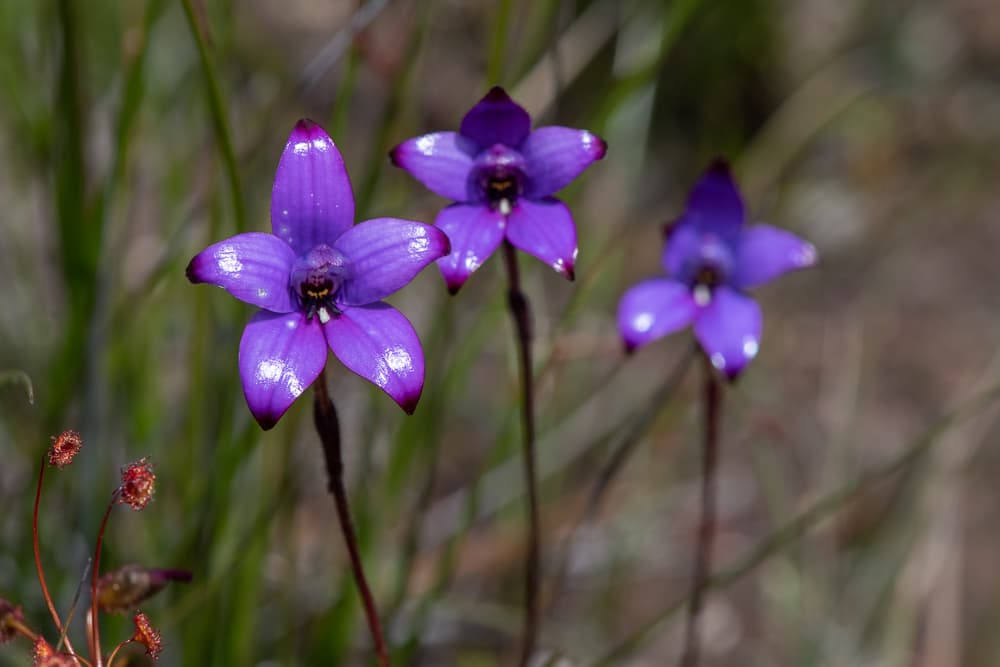
- red leschenaultia, one-sided bottlebrush, jarrah runner, kangaroo paws, coral vine and grevilleas;

- Orange bacon and eggs, heart leaf poison, York Road poison, prickly poison, and blazing orange Christmas trees that burst into flower later in the year, adding to the excitement of Christmas expectations; and
- a variety of other orchids: fan, jug, shell, greenhood, spider, mosquito, rabbit, bird, zebra, and bee.


Grasses, reeds, sedges, rushes, mosses and fungi would all have been there too, but their display wasn’t so eye-catching and their names were not familiar.
In those days we knew nothing about weeds like veldt grass, lovegrass, tagasaste, freesias, ixias, African orchids, soursob (Oxalis), bridal creeper, eastern States’ wattles, onion weed or wild gladioli. All had yet to come to Kojonup.
All the wildflower loveliness grew in the undergrowth below the trees. It was habitat for small wildlife which was rarely, if ever seen: tiny pygmy possums, numbats, chuditch (quolls), frogs and lizards (and rabbits – we saw plenty of them!). Occasionally the eerie call of distant ground-dwelling curlews could be heard at night.
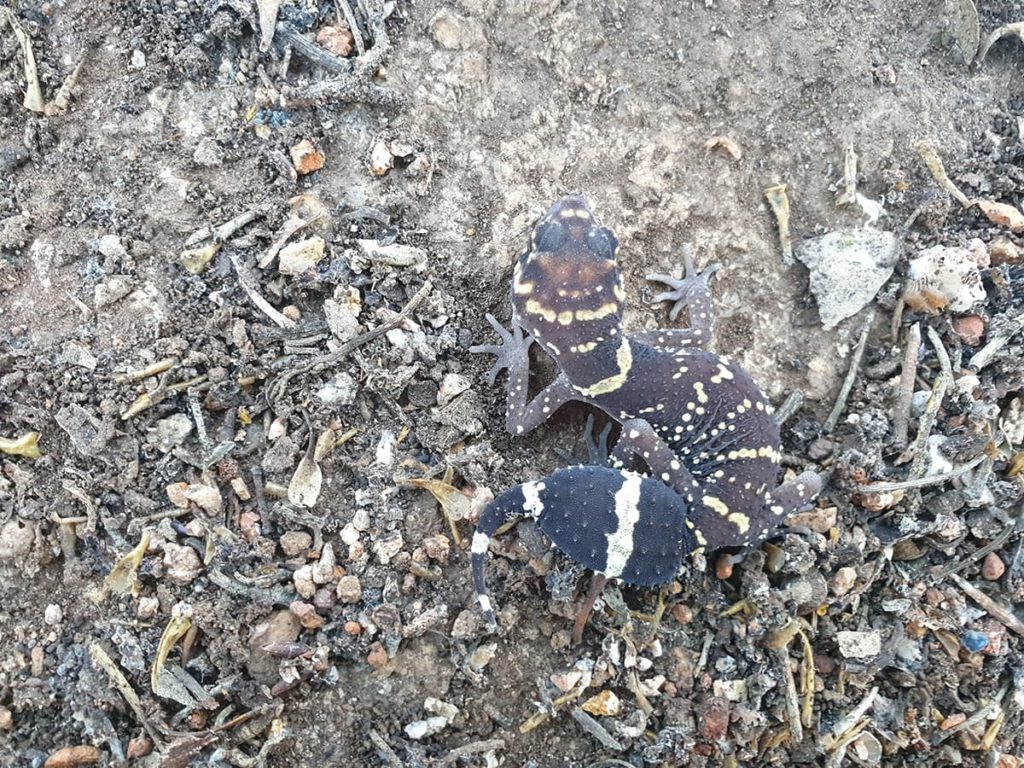
Small birds like wrens and thornbills flitted in the shrubby understorey, and up in the trees were magpies, mudlarks, willie wagtails, crows (now more correctly identified as ravens), owls, cockatoos, parrots, pardalotes, sittellas, robins, honeyeaters and other little birds, unknown to us or harder to identify.
Above the trees, wedge-tailed eagles and little eagles soared. There were hawks, kites, kestrels and falcons — they all hunted the smaller life which hunted for the multitudes of beetles, ants, termites, spiders and seeds.
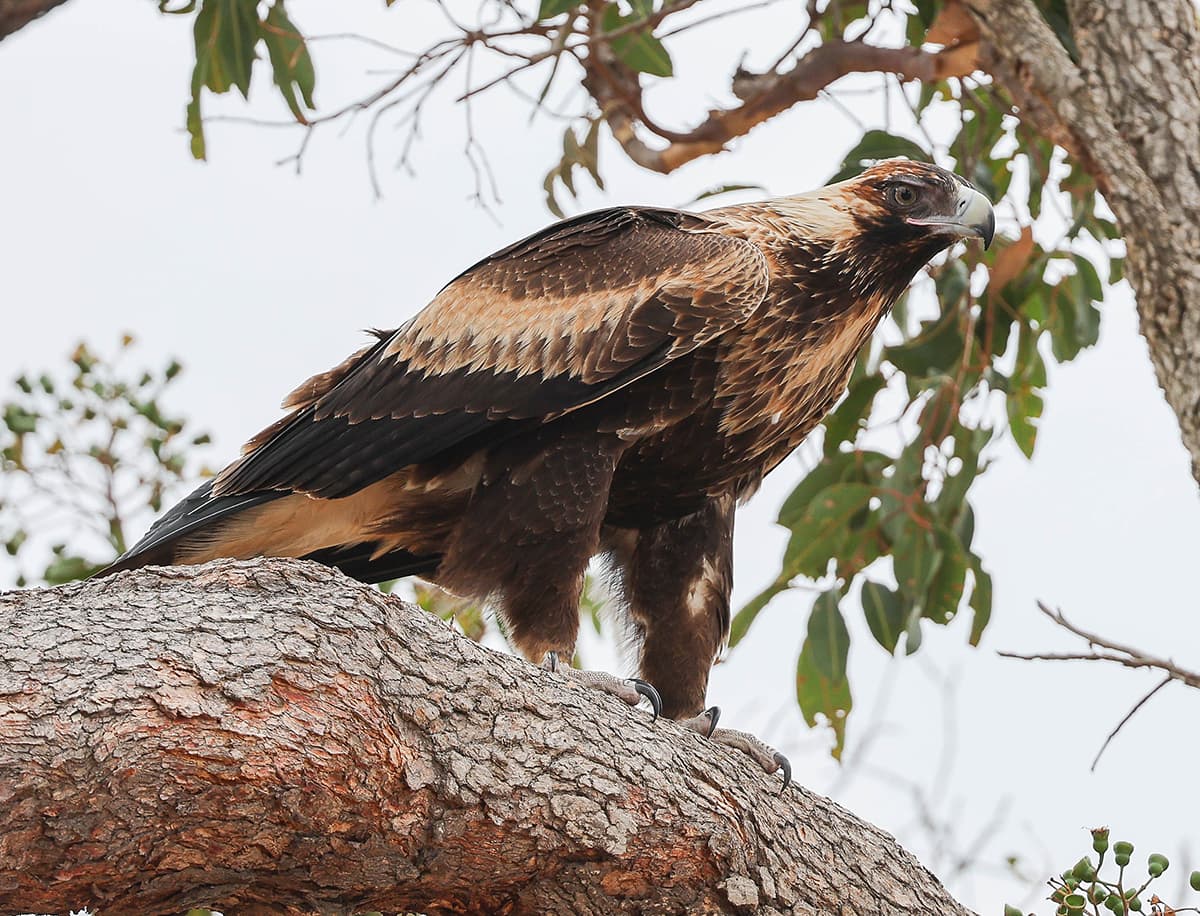
Roadsides and bush reserves were habitat and hunting grounds for them all.
Unseen, in and on the soft ground beneath the trees were fungi, mosses, moulds, worms and millions of micro-organisms. All keeping the soil aerated and healthy, all part of the local web of life, helping to feed the trees and each other through root and underground fungal connections.
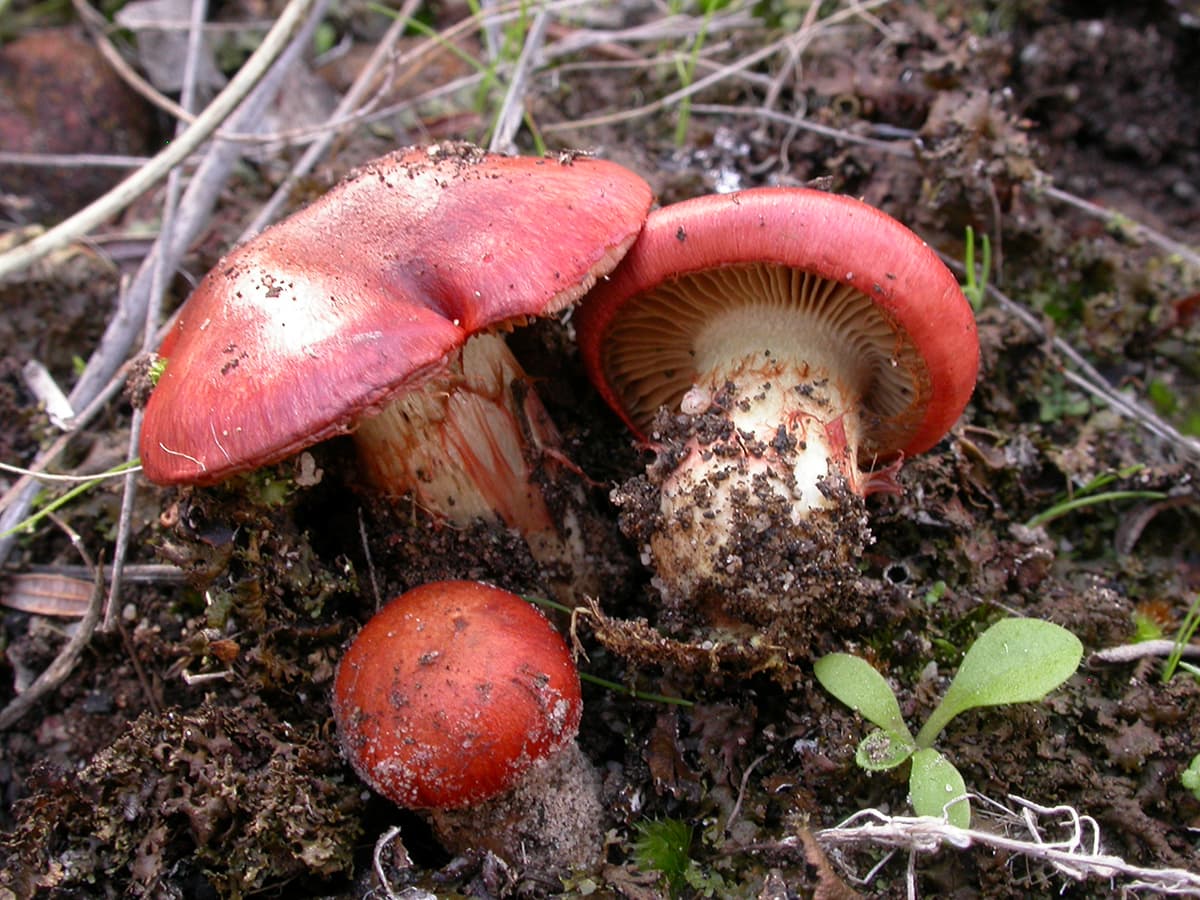
Back then, in summertime, the squeakers (grey currawongs) flew in to raid the fig tree. It was a real battle to get a few figs for ourselves; they were the enemy! Hardly anyone sees them now — they need bush habitat.
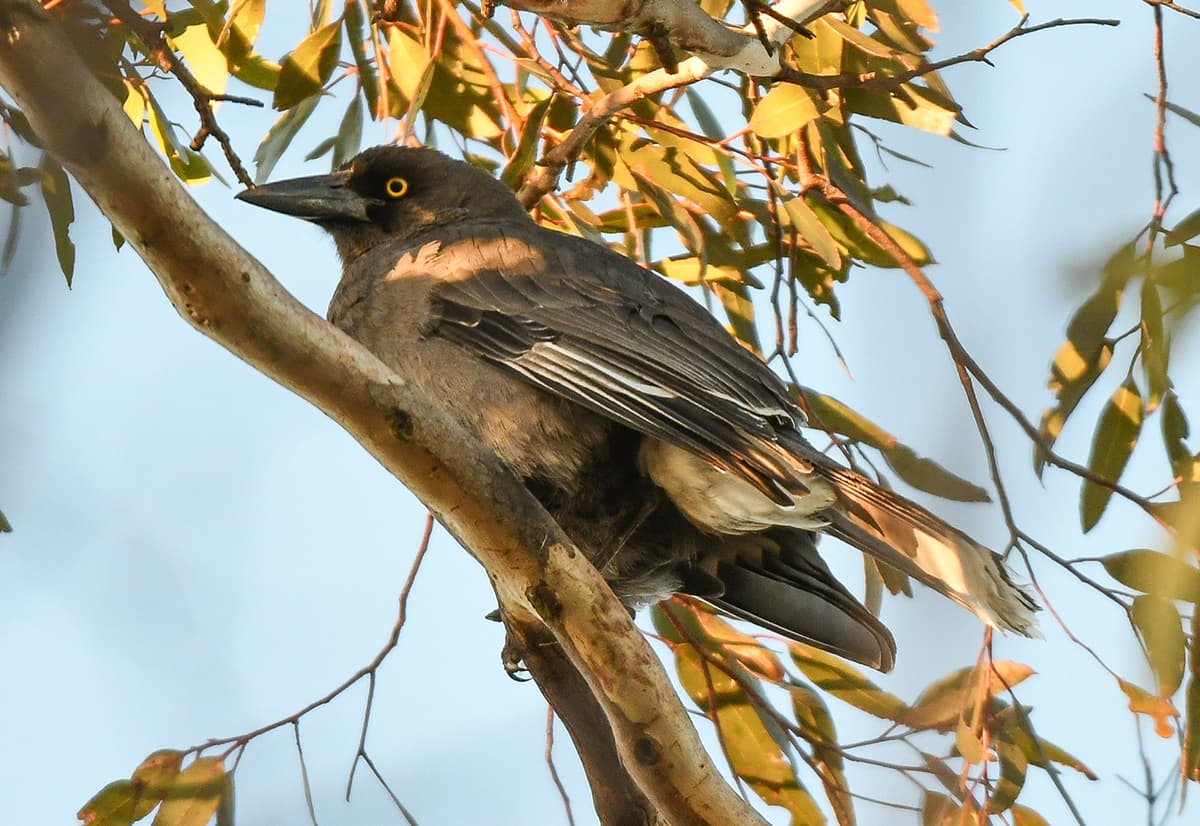
In the late summer, cleared tracts of bush were burnt, the air was smoky and the setting sun often glowed red. Being driven out into the darkness to see the flickering flames and flying sparks after a burn was a wonderful fairyland treat for children! We were young and spared little or no thought for the masses of living things burnt or homeless.

An early autumn break would bring mushrooms, none if the cold winter set in before the rains came.
An early autumn break, while the ground was still warm, meant the joy of mushroom hunting in the paddocks. The rains filled old stump holes, left where the trees had been burnt out. These became pools with floating frogs’ eggs, and teemed with tadpoles.
Already there were ghosts. A granite outcrop which was once home to boodies (burrowing bettongs) had become an empty warren. For a small child the spaces they had dug out between the rocks were a joy to drop into, deep amongst the dead leaves and spider webs. It was scary, though, to become wedged between boulders and not be able to get out again without unsympathetic adult help! We didn’t know what a boodie really looked like but it seemed sad to know they had gone.

About 15 years ago, our landcare officer, newly arrived from Queensland, was so delighted to be taken to a spectacular wildflower display on the verge of a little narrow road. He took masses of photos. There are no wildflowers there now. Invasive, perennial grasses, which are prone to fire, have overgrown them, although it is still just a little narrow road.
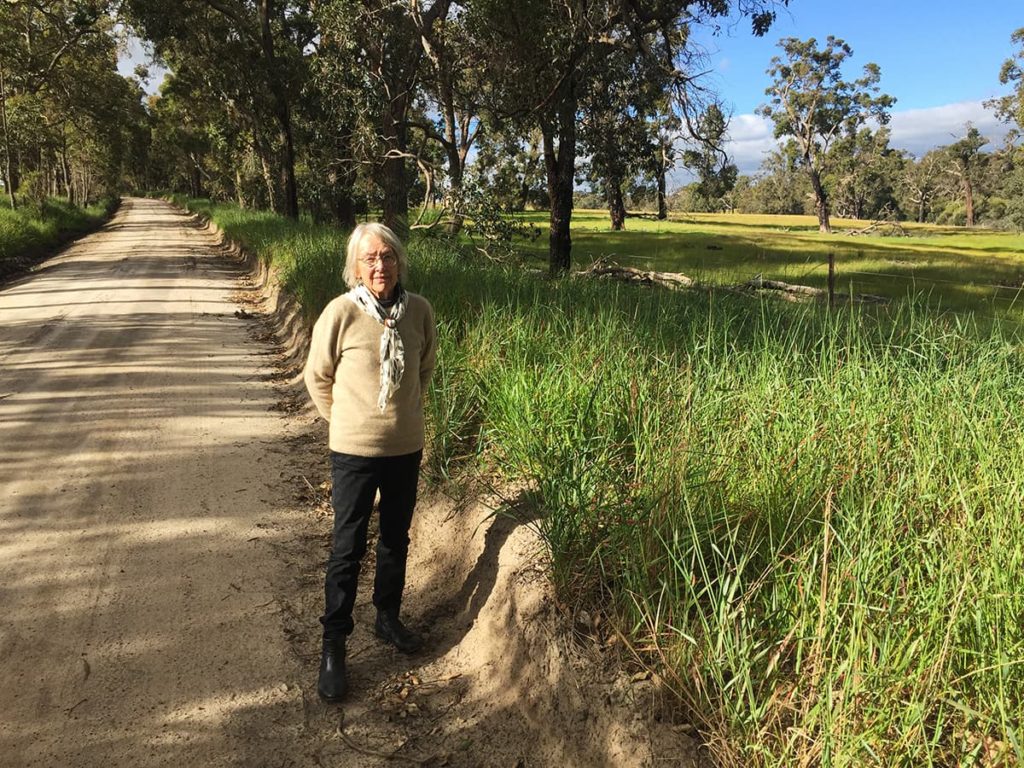
The road verges used to be corridors for plants and animals so that remaining bush reserves were connected. But most of the roads have to be wider now, so the verges are narrower. Most of the natural ground cover has gone. Birds can still move along them if there are any trees left, but the reserves are being reduced to islands of hope (or despair) for nature.
Some patches of healthy bush are preserved in reserves and on farms, and there are some clumps and rows of trees perhaps planted 30 or more years ago when Land Conservation District Committees were better funded and more active. In the Kojonup district there were at least 18 catchment groups, each with a membership of ten or so farmers. Many creek lines, saline areas and shelter belts were planted. Some of the hard work of fencing and revegetation has been destroyed by fire, not all has been replaced, and while some fences have rusted away, much is still maintained, providing valuable shade and shelter.
Blue gum plantations came and went, seen as an opportunity but mostly cleared now because they didn’t live up to expectations. There are some pine plantations, which fared better. Both the red- and white-tailed cockatoos love them for their seeds — with the loss of other food trees and shrubs, they have learnt to depend on them.
Because modern cropping machinery is so big and computerised the lovely old ‘parkland’ trees spaced across the paddocks, which Kojonup was famous for, increasingly face bulldozers and burning.
While some of the ancient original trees are still scattered in paddocks — picturesque red gums, jarrah and white gums perhaps two or three hundred years old — many look sick and some are dying. Is it because of climate change or is it because the fungi and other vital soil life they depend on to break-down our poor soils to feed their roots are no longer able to exist? Destroyed by wheels, cloven hooves, hungry mouths, fertilisers and poisons?
Now and then someone in the district sees something here which used to be common. Over recent years numbats were seen and photographed near Muradup, a chuditch near Jingalup, a pygmy possum at night time in the bottlebrush at the Kojonup Tennis Club, an echidna in Jingalup bush just this winter, and peregrine falcons seen lately at Jingalup and Ryan’s Brook.
Aboriginal people lived mainly in harmony with their world. They were really the first farmers, able to shape their surroundings to feed or protect themselves because they knew that they were part of one natural system. They valued it all because they understood that they needed it all.
People can fly to the moon, dive to the bottom of the sea, send millions of messages instantly all over the world, and build 100-storey skyscrapers. Can we learn to look after our planet and all the living wonders which share our need for food and shelter? Can we recognise that we need them, all these life forms, even things that people today can’t remember because they never knew them?
Is the dominant human mindset that the world was made for us the problem that needs solving? Aren’t we just part of a system in which all living things are important? And do our capabilities mean that we have the responsibility and ability to look after our planet, or at least leave space for other living things to care for themselves?
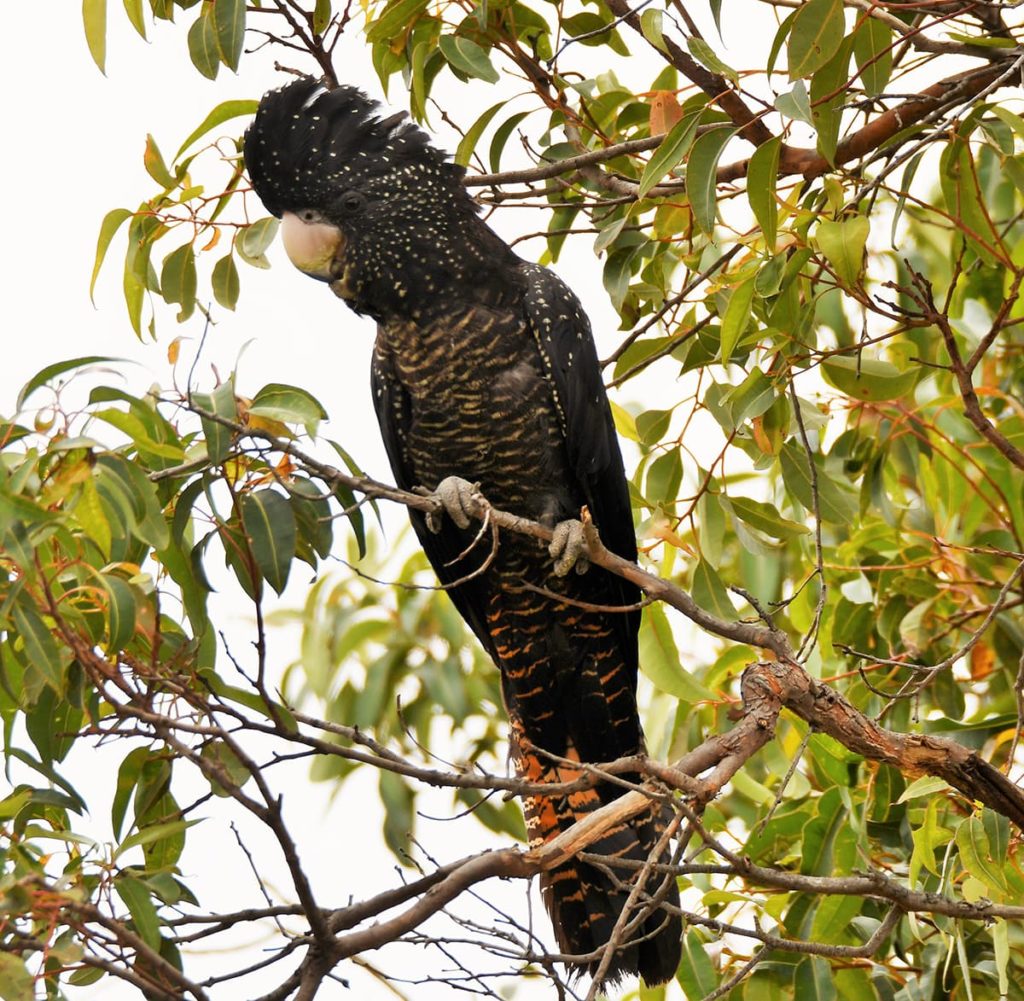


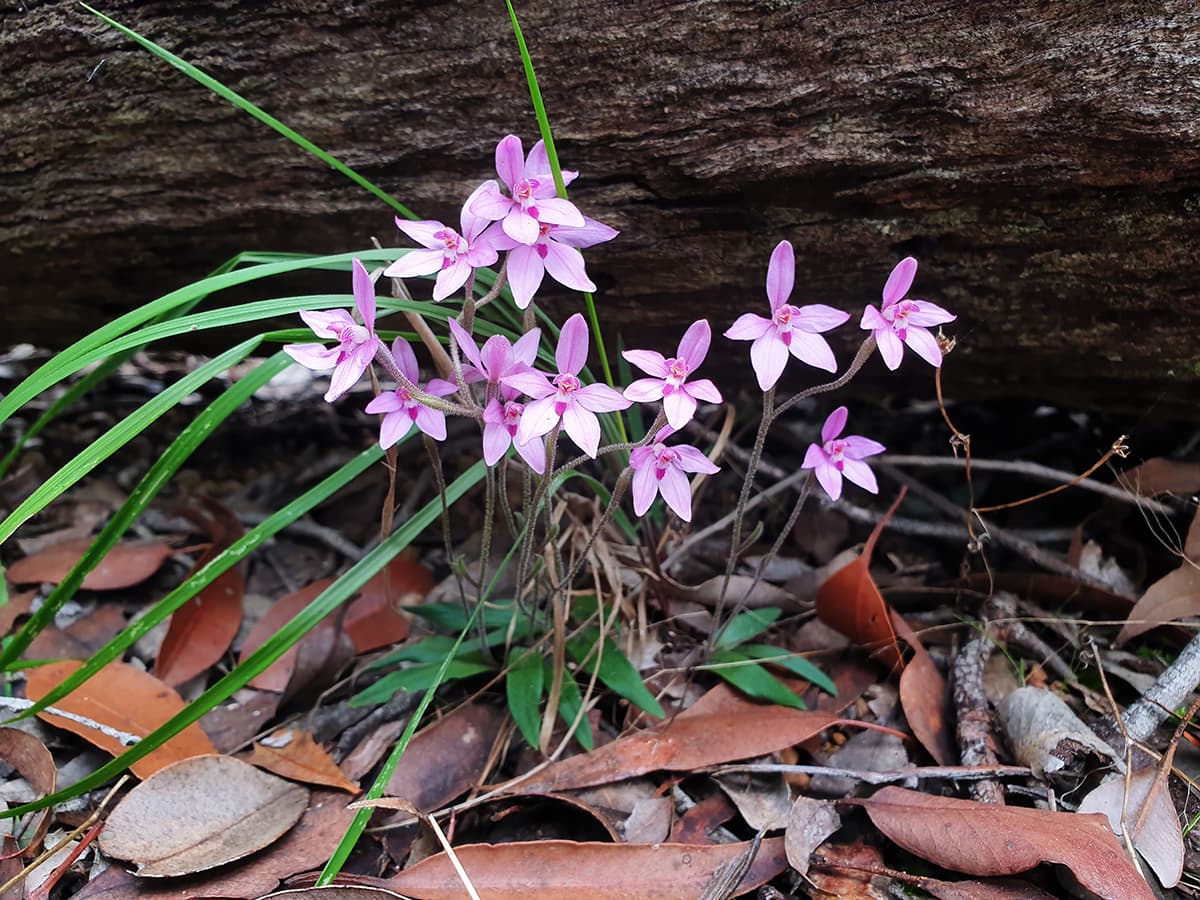
Sincere thanks to Kath Mathwin and the photographers. The title photo of everlastings was taken by Amanda Keesing at the Myrtle Benn Flora and Fauna Sanctuary, Kojonup. This ‘Heartland Journeys’ story is also published in the September 2022 edition of the Southerly Magazine.
